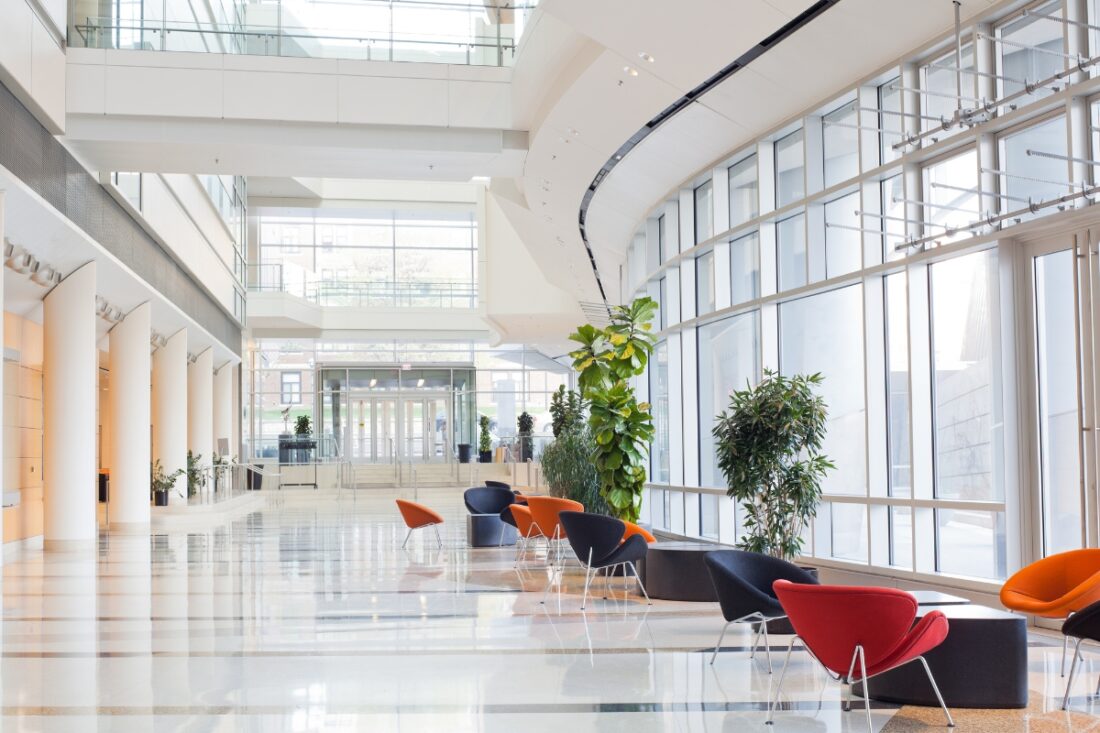
The Role of Lighting and Acoustics in Creating a Calming Office Environment
Stressful work environments drain creativity, decrease focus, and diminish overall worker health. Poor lighting and distracting noise are contributing factors. Most offices don’t care about these environmental triggers. However, they weigh strongly on morale and productivity. Modern wellness approaches emphasize the simplicity of design enhancements to restore balance and clarity.
Thoughtful lighting choices and sound solutions create a calming office environment that boosts productivity. Dedicated planning on the part of office build-outs gets balance, comfort, and energy into working areas.
Why Office Environment is Important
Office design has a direct influence on well-being, energy, and employee happiness. Bright light or chronic noise heightens stress, fatigue, and distraction. Comfortable environments foster concentration and enable prolonged performance.
Quiet office spaces boost creativity and decrease stress-related burnout. More businesses are taking a more human-wellness approach when office build-outs in Homer Glen. New designs feature ergonomic seating, open spaces, and sustainable materials.
This is a reflection of increasing awareness of the link between a healthy work environment and physical and mental health. Human-centered office design creates value over time in increased employee engagement and organizational performance.
The Impact of Lighting on a Calming Office
Natural Light vs. Artificial Light
Natural light enhances mood, regulates circadian rhythms, and retains attention. Only artificial lighting in offices has been known to cause fatigue, irritability, and eye strain. Natural light incorporation into office build-outs introduces balance and energy.
Warm and Cool Lighting
Warm colors introduce relaxation, while cooler colors stimulate attention areas. A relaxing office environment calls for balanced lighting in various areas. Break rooms are improved by warm light, while meeting areas work best under cooler colors.
Prevention of Eye Strain and Glare
Poor positioning of the workstations creates glare and discomfort. Adjustable lamps and diffused light reduce strain. The incorporation of thoughtful lighting in office build-outs creates long-term comfort and healthier visual performance.
The Role of Acoustics in Stress Prevention
Noise and Workplace Stress
Conversational noise, machinery, and traffic noise distract from concentration. Long-term exposure heightens anxiety and lowers productivity. A stressed-out office space requires measures to control sound.
Soundproofing and Noise Reduction Strategies
Carpeting, wall panels, and ceiling treatment reduce distractions. Plants and furniture add natural absorption. Office build-outs in Homer Glen must include these modifications for a fair workspace.
The Balance between Quiet and Collaboration
Total silence is not possible. Employees need quiet workspaces and active collaboration spaces. A calm office space balances these demands. Acoustic zoning keeps teams from disturbing other employees while they work effectively together. Sensitive design balances both creativity and wellness.
Creating a Calming Office with Lighting & Acoustics in Harmony
A true calming office environment is when lighting and acoustics harmonize. Open offices benefit from smart lighting and sound-absorbing panels. Hybrid setups require flexible light modes and acoustic zoning for flexibility of use.
Home offices prefer soft desk lighting and white noise devices. Office build-outs may incorporate technology like smart systems for customized control. Combining these solutions increases productivity and creates sustained focus. Employees work best when light and sound create balance and relaxation.
Practical Tips for Employers
With simple design adjustments, employers can improve well-being. Moved desks for a natural light boost and energy. Acoustic panels reduce distraction and allow for deeper concentration. A calming workplace also values noise etiquette policies. Creating quiet areas allows for focus, while flexible spaces allow for collaboration.
Employee feedback should be included in office build-outs for personal comfort. Employee feedback enables businesses to find out what works and what is required, and builds productive solutions. Prioritizing lighting and acoustics demonstrates that leadership prioritizes health, productivity, and long-term workplace well-being.
Lighting and acoustics determine whether workplaces spark stress or facilitate success. A calming office environment improves focus, creativity, and employee wellness. Businesses must prioritize careful planning for office build-outs. Good light and sound, balanced well, make work life healthier and more productive. Voluntary design by businesses protects individuals and performance.
A calming work environment encourages loyalty and builds long-term development. Investing in design ensures sustained well-being and releases staff potential across all organisational levels.

